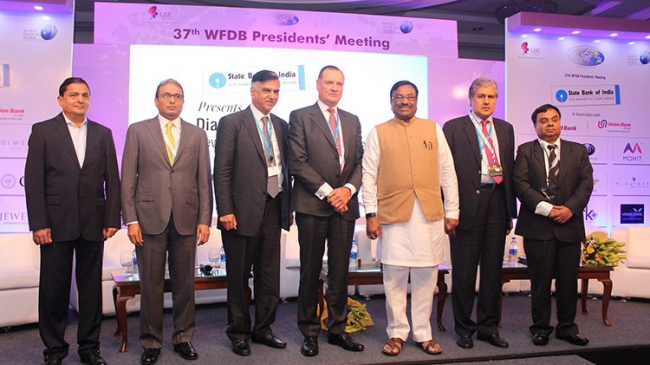The diamond industry and the banking sector are getting to know each other again, having recognized the gulf that’s developed between them. In that spirit, the diamond financing seminar that took place recently in Mumbai presented a much-needed opportunity to talk. “Unless the industry knows our problems and the lenders understand the industry’s challenges, we can’t move forward,” said Karnam Sekar, deputy managing director at the State Bank of India.
The bankers still view diamonds as a high-risk sector. Representatives from the diamond trade, meanwhile, feel there has been significant progress in improving the industry’s level of compliance, transparency and so-called bankability.
It appears that both are correct — there has been progress, but more needs to be done given the regulatory environment constraining the banks.
Following the financial crisis of 2008, extra capital requirements introduced under the Basel banking regulation reforms transformed the operations of the financial institutions with which the diamond industry does business, according to Ernie Blom, president of the World Federation of Diamond Bourses (WFDB), which hosted the seminar in February.
“It is essential for diamond companies to understand these changes and adjust their approach to continue to thrive,” he said at the event. “But we must also emphasize the way our industry has embraced self-regulation in order to shatter the myths that unfortunately are attached to our business.”
What has the industry done?
The push toward financial compliance and governance has come not only from the banks, but also from the mining and retail sectors.
Signet Jewelers, the world’s largest jeweler, launched its Responsible Sourcing Protocol for Diamonds in February 2016, requiring its suppliers to enforce proper invoicing throughout the distribution chain in order to ensure their end-product has been ethically sourced.
Similar traceability programs are being implemented at other retailers and through various trade bodies. India’s Gem & Jewellery Export Promotion Council (GJEPC), for example, developed its know-your-customer (KYC) program, called “My KYC Bank,” centralizing the formalities for completing the KYC requirements.
The mining sector, meanwhile, has raised the bar when it comes to financial compliance. De Beers is insisting its sightholder clients adhere to international financial reporting standards (IFRS) and to its best-practice principles for corporate social responsibility in order to qualify for its rough supply. Other major diamond miners such as Alrosa are doing the same.
De Beers reported in December that nearly half of its 85 sightholders had completed the required roadmap to compliance. The rest have to get their books in order so they can submit audited IFRS reports for the current financial year.
Small company challenge
The larger diamond manufacturers and trading companies have embraced the new transparency standards, says Eric Tunis, a partner at New York-based accounting firm Friedman LLP, which services diamond and jewelry clients.
Nonetheless, he tells Rapaport News, “there are many smaller players in the US — who are good, ethical people to start with — that still need to improve their compliance standards.”
Considering how long it took for sightholders, who already had organizational structures in place, to comply, we must have realistic expectations regarding how quickly the rest of the industry can get their houses in order, he adds.
Tunis expects there will be more consolidation in the US because small businesses don’t have access to funding, and because there is an oversupply of companies chasing a stagnant market.
Similarly, in India, panelists at the seminar highlighted the need to focus on the small-to-medium-size enterprises (SMEs). The country’s institutions are working hard to formalize the sector, noted Anoop Mehta, president of the Bharat Diamond Bourse (BDB).
That’s particularly necessary in light of the Indian government’s demonetization program, which eliminated high-value cash notes and steered the country toward electronic transactions. Demonetization caught smaller manufacturing units off-guard, since many of their workers don’t have bank accounts — or even convenient access to banks — as would be required for such transactions.
“A large percentage of the industry is made up of SMEs that pay their workers in cash,” GJEPC chairman Praveenshankar Pandya explained at the seminar. “So it will take time for them to open checking accounts and fall within regular banking channels.”


